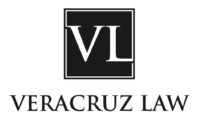Entrepreneurs can generally choose from a number of different entities when incorporating their business. However, due to the fluid nature of businesses, the advantages and disadvantages are not always clear at the time of formation.
Limited liability companies and corporations are the two most typically attractive options for small businesses considering incorporation. Unlike sole proprietorships and general partnerships, members of LLCs and shareholders of corporations have limited liability and greater protection for their personal assets. Members and shareholders can limit their liability and protect their personal assets from creditors.

But if both options offer owners liability protection, why do some business owners choose to form an LLC instead of a corporation, and vice versa? Below are some considerations to help you decide what type of entity might be the best fit for your business.
Corporate Formalities: Unlike a corporation, an LLC does not have to hold regular meetings and keep corporate minutes, which reduces the paperwork of maintaining your entity.
Taxation: The tax default for an LLC is treated as a pass-through entity, meaning the profits or losses from the entity pass through directly to the owners. An LLC can instead elect to be taxed as a C or S corporation so the owners can take advantage of certain tax advantages based the company’s income and expenses. The tax default for a corporation is subject to taxation at both the entity and the owner level. A corporation can also elect to be taxed as an S corporation which, like LLCs, allows for pass-through taxation. However, additional restrictions regarding who can be a shareholder of the corporation exist if you elect to be taxed as an S corporation. For example, S corporations can have no more than 100 shareholders and can have only one class of stock.

Inclusion of Debt: Early on, a startup or small business will often operate at a loss. Corporation shareholders may not deduct losses beyond their basis in their stock or debt obligations. In contrast, LLC owners can include their proportionate share of the debt from the LLC, so they can deduct a larger share of the losses.
Management: An LLC’s members or managers can manage the company. In contrast, a board of directors and its chief executive officer are in charge of managing corporations.
Distributions: A corporation must allocate its distributions in proportion to each shareholder’s ownership share. An LLC, on the other hand, does not necessarily have to allocate its profits or losses in proportion to each owner’s membership interest. Instead, the distributive share of gains, losses, deductions or credits can be determined in the LLC’s operating agreement (and subject to certain IRS restrictions against negative capital accounts). Additionally, members of an LLC can transfer and withdraw property into the LLC without the recognition of taxable gain by the LLC or the member with whom the property has been distributed. In the case of corporations, property distributions can result in taxable gain.
Investment: Entrepreneurs hoping to achieve venture seed funding, typically choose the Delaware C Corporation. Venture capital firms won’t automatically screen out businesses that are not incorporated in Delaware, but they prefer Delaware due to friendly corporate governance benefits and predictable corporate law.
Selecting an entity that is appropriate for your business will depend greatly on how you plan to run the business and where you hope to take it. One size does not fit all. Crafting a strategic entity can mean a world of difference as your business begins to take off.
Entity structure is a fairly straightforward choice for public companies, which are almost always C corporations because that legal structure allows the entity to be separate and apart from its shareholders, directors, and officers. Closely held businesses have more choices to make — which can complicate the decision process. Succession planning isn’t the only factor that determines which structure suits the company’s long-term needs. Exposure to liability, access to capital, and the personal financial needs of the owner and other stakeholders all enter the equation. Entity structure is a necessary part of any plan to move into a new generation of ownership because it has a significant effect on business taxation, personal taxation, and the company’s ability to transfer wealth. In addition to sole proprietorships, closely held businesses can choose from many different structures. For a business to match its structure to its future needs, it is worth examining the pros and cons of several potential forms: partnerships and limited liability companies, S corporations, and C corporations. Remember that a succession process involves more than one kind of stakeholder. There are the significant owner managers who no longer want active participation in the business, and are likely to want to monetize their investment, and then there are the people who intend to remain with the business and continue to contribute to its success. The tax and other implications of an entity structure choice will generally affect the fortunes of both these groups, and this decision has a lasting impact on future options for business succession. This discussion will guide you through the various choices to consider and how they can affect long-term plans.
One of the most important decisions a business owner must make in estate planning is selecting the appropriate business entity. That decision will affect the income and transfer tax consequences to the owner and the family and the ease with which the business can be shifted from one generation to the next. Generally, there are four choices: (1) C corporations; (2) S corporations; (3) limited partnerships; and (4) limited liability companies.
Gift Giving and the Business Entity
An immediate consequence of the choice of business entity is the ability of the owner to make lifetime gifts to the next generation. Making lifetime gifts of interests in the business is an essential part of the estate plan for three reasons: (1) the interest given away is removed from the owner’s estate, thereby reducing the overall estate tax; (2) all appreciation in the value of the interest after the gift is removed from the owner’s estate; and (3) all income earned by the interest after the gift is removed from the owner’s estate.
C Corporation
A C corporation, unlike a sole proprietorship, is a separate legal entity. As such, a C corporation has the right to sue or be sued, enter into contracts, and hold and dispose of property in its own name. More importantly, a C corporation is a separate taxable entity. Therefore, the major disadvantage of a C-corporation is double taxation. In other words, a C corporation pays income tax at the corporate level on its earnings and then the shareholder pays income tax at the individual level on the after-tax earnings distributed as dividends.
Making gifts of stock of a C corporation is relatively simple. Usually, the business owner wants to maintain control over the business while making gifts to the younger generation. One way to accomplish this is to create two classes of stock‹ preferred stock and common stock. The only difference between the two classes is that the preferred stock has voting rights while the common stock does not. The owner can then make gifts of the nonvoting common stock to the younger generation and, by retaining the voting preferred stock, maintain control over the corporation.
Because the owner is giving away a minority interest, a discount from the value of the interest is available for gift tax purposes. The discount is based upon both the lack of control and the lack of marketability of the stock that the donee receives. A discount of 30% to 40% for both the minority interest and lack of marketability is generally considered reasonable.
S Corporation
An S corporation is a corporation which has made an election under the Internal Revenue Code to be treated as a pass-through entity for tax purposes. All income and losses are passed through to the shareholders, and there is no corporate level tax. The principal disadvantage of an S corporation is the strict requirements for making and maintaining the election.
One of those requirements is that an S corporation may have only one class of stock. However, differences in voting rights are disregarded so long as all of the outstanding shares have identical rights to distributions and liquidation proceeds. Therefore, an S corporation may be recapitalized to create preferred stock and common stock if the only difference is the voting rights of the shares.
Another requirement is that an S-corporation may have no more than 100 shareholders. More importantly for estate planning purposes, with certain limited exceptions, a trust is not an eligible S corporation shareholder. That restriction challenges S corporation owners who wish to make lifetime gifts of stock to the younger generation.
Generally, the same valuation discounts that are available for gifts of stock of a C corporation are also available for gifts of stock of an S corporation.
Limited Partnership
Use of family limited partnerships has become an increasingly popular means of transferring the family business to the younger generation. In a limited partnership, the general partners have unlimited liability for debts incurred in the business and complete control of the management of the business. The limited partners are not liable for the debts and liabilities of the limited partnership in excess of their capital contributions and generally have no control or management rights. Consequently, the business owner can transfer earnings and appreciation to the next generation by making lifetime gifts of limited partnership interests while maintaining complete control by retaining a small general partnership interest. Again, valuation discounts of 30% to 40% for gift tax purposes may be appropriate.
There are certain assets which should not be placed into a family limited partnership, including (1) the family home; (2) individual retirement accounts and other qualified plan interests; (3) stock in an S corporation; (4) stock in a professional corporation; (5) risky assets, such as cars, planes, and boats that are likely to attract liability in the form of large lawsuits; and (6) personal use assets, such as art, jewelry, antiques, or other collectibles.
Limited Liability Companies
A limited liability company (LLC) is a hybrid entity offering limited liability to its members, like a corporation, and pass-through income tax treatment to the owners, like a partnership. An LLC offers the best of both the corporation and the partnership to its members and avoids some of the disadvantages of the S corporation and the limited partnership. See the related article in this Bulletin regarding the uses and advantages of an LLC.
